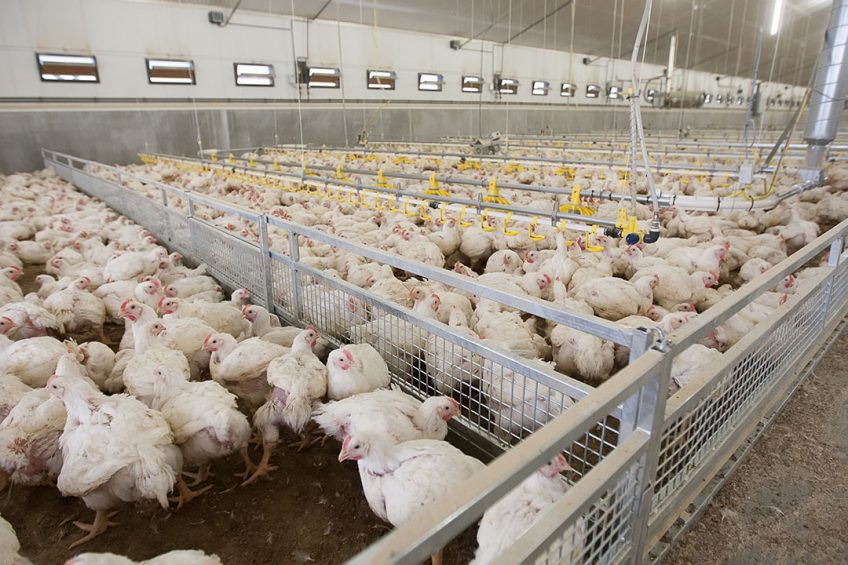Copper exchanged clay as AGP alternative

Dramatic increase in antibiotics resistance worldwide has led to the ban of their use as growth promoters in many countries and to a higher demand for efficient and cost-effective alternatives. In this context, a specific Copper exchanged clay (CeC), was developed as such as an alternative.
Antibiotics are administrated at the Minimum Inhibitory Concentration (MIC) for curative effects or they can also be administrated at preventive dosage at sub-therapeutic dose (lower than MIC) with an objective to avoid diseases and stimulate growth performances. Currently, there is controversy surrounding the use of antibiotics and antibiotics used as growth promoters (AGP) for animals destined for meat and eggs production, as overuse of any antibiotic over a period of time may lead to the local bacterial populations becoming resistant to the antibiotic.
According to the World Health Organization (WHO), antimicrobial resistance (AMR), including antibiotic resistance, is the most urgent drug resistance trend today. As stated by the European Commission, AMR is responsible for an estimated 25,000 deaths per year and costs 1.5 billion of euros per year in healthcare costs and productivity losses. This growing awareness leads to an increase in the worldwide banning on antibiotics, used as growth promoters (AGP), and consequently to the increase of AGP alternative development.
Many types of alternatives exist today such as organic acids, plant extracts, probiotics, prebiotics, essentials oils etc. having very different modes of action. It could be very difficult to identify the most efficient ones. According to Gordon Rosen, all the available properly-controlled test data must be taken into account for a feed additives evaluation. Those tests can illustrate the potential of a product as a starting point, but five tests cannot take account of the wide range of genetic, environmental, farm management and dietary factors affecting responses in praxis.
A reliable additive evaluation
Gordon Rosen, has published a methodology to evaluate a feed additive objectively and properly. To achieve this goal, he made a list of seven fundamental questions or criteria and proposed seven quantified target answers to those questions. This methodology is useful to assess the reliability of the trial data, the frequency of performance improvement and the reliability of the effects. The seven criteria and the seven expected answers are presented in Table 1. The key criteria for broiler producers always remain the performances, and regarding performance improvement, the expected answer is superior or equal to 7, which is equivalent to the data available on AGP. This method has been applied to a patented feed additive, Copper exchanged clay (CeC), a Wisium solution promoted as an alternative to AGP. The company has been working for almost 15 years to develop CeC, a unique and patented nutritional specialty aimed at securing the digestive process.
The additive is based on an ion activated clay, bringing to the product high antimicrobial potency on various pathogens. Its specificity is to act as a microflora modulator in the gut and to help monogastric animals face challenging periods. More precisely, the efficacy of this product was studied on broilers, reared from 1 to 40 days of age. A total of 36 trials were carried out. They are representative of various production conditions, such as experimental farms, commercial farms, hot or mild climate.
Results of the analysis for CeC
The results conducted with this feed additive in broilers are presented in the Table 2. According to this methodology, the tested feed additive answers positively to the seven Rosens’s criteria. This product can thus be objectively considered as an efficient solution to improve zootechnical performances in broilers. Moreover, the product improves performances in 74% of all tested cases, which is as good a result as those obtained with the antibiotic growth promoters. The results obtained with the product, in 36 trials, in different conditions are illustrated on Figure 1. Challenge conditions corresponds to field conditions or provoked challenge and non challenge conditions to good sanitary conditions. On average, weight gain was improved by + 2.9% and FCR by -1.8%.
Figure 1 – Summary of zootechnical performance improvement compared to control with CeC in non challenging or challenging conditions.

Specific protocols have been built in order to avoid false positive and false negative results and to allow the product to express its potential. False negative results, or an under evaluation of the potential of the additive, can be obtained when the additive is used in conditions where the product cannot express its potential, when the targeted problem is not present or on the contrary when the problem’s intensity is too high. Thus, evaluation of a gut flora modulator, whether it is an essential oil, a live bacteria or another product from different origin, has to be set up on animals with unbalanced gut flora. False negatives are often obtained when gut flora regulators are tested in optimal sanitary conditions. For example, in optimal conditions, avilamycin increases growth by only 1% while in field conditions, growth improvement ranges from 2 to 5%. Similarly, flavomycin increases performances in 50% of the trials conducted in good experimental farm conditions, this goes up to 83% in field conditions. In these specific challenging conditions, the product CeC allows 3.4% more weight gain and 2.2% better Feed Conversion Ratio (FCR).
Conclusion
Rosen has published a methodology to evaluate objectively the reliability and the repeatability of the products’ response. This methodology has been applied to CeC, a feed additive sold as an alternative to AGP. This product answers positively to the seven questions asked by Rosen. This Copper exchanged clay can be recognised as a valuable and reliable feed additive to improve zootechnical performances of broilers that can be reared in many different conditions. More precisely, CeC ensures an improvement of the zootechnical performance of the broilers in 74% of the cases, which is equivalent to the data available on AGP. The response is optimised in challenging conditions (non optimal gut microflora) allowing on average 3.4% more weight gain and 2.2% better feed conversion ratio.
References available upon request.









